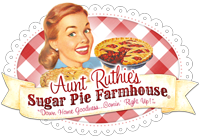 Fresh Baked Corn Muffins
Fresh Baked Corn MuffinsI have been hibernating in my home this week.
I’ve had a head cold that’s been sapping my energy and spirit lately and the cold temperatures and dreary grey rainy weather haven’t helped my attitude much either. When I don’t feel well, I tend to hibernate away from people and my usual activities until I can heal myself and feel better. I try to avoid stressful things that make me think too much, and I amuse myself with relaxing diversions… like blogging… or baking. The cold weather encourages me to bake. It warms my home and my heart. It comforts my soul.
So late last night I got the urge to bake some corn muffins. The basic recipe I used is from my Betty Crocker “Big Red” cookbook, but I made a few changes to her recipe to make it my own. Here’s my recipe for the corn muffins as I made them last night. It works fine to make corn bread as well.
Heat oven to 400 degrees,
Prepare 9 x 1 ½ inch round pan or 8 x 8 x 2 inch square pan, or 12 muffin cups by greasing with shortening or using paper muffin cupsIngredients
¾ cup low fat plain yogurt + ¼ cup unsweetened soy milk stirred together
(Betty used 1 cup milk instead)
¼ cup olive oil (Betty used ¼ cup butter, melted)
1 large egg
1 ¼ cups Polenta (Betty used cornmeal)
1 cup all purpose flour
½ cup sugar
1 tablespoon baking powder
½ teaspoon salt
Prepare baking pan.
Beat yogurt, soy milk, oil & egg together in large bowl by hand with wire whisk. Stir in remaining ingredients all at once just until flour is moistened. Batter will be lumpy. Spoon into muffin cups or pour into baking pan.
 Corn Muffin batter ready to bake
Corn Muffin batter ready to bakeBake muffins at 400 degrees for 15-20 minutes until lightly golden brown. Bake round or square pan a little longer, 20-25 minutes. Serve warm with butter and/or honey or whatever pleases you.
Notes** I rarely have milk in the house as I tend to use soy, but milk would work just as well. The yogurt adds a nice tangy taste that I like. I do usually have cornmeal in my kitchen, but ran out recently. The polenta worked very well and gave the muffins a rich yellow color and very nice texture. I usually substitute olive oil for butter whenever I can in my baking. It’s healthier and I think it improves the texture of many things. I use certified organic ingredients if I can.
 Baked lightly golden brown in my Grandmother's muffin pan
Baked lightly golden brown in my Grandmother's muffin panSo enjoy the warmth of your kitchen and the crunchy corniness of these muffins. I am going back into hibernation now.



























